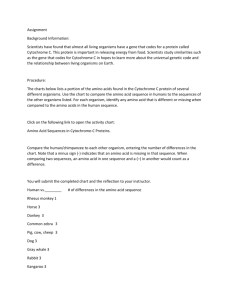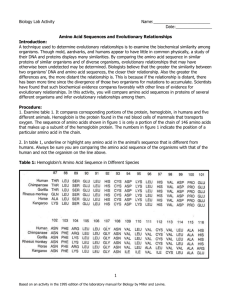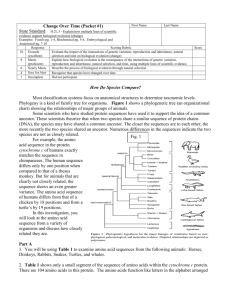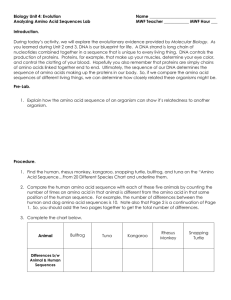Part IV. MOLECULAR HOMOLOGIES: COMPARING AMINO ACID
advertisement
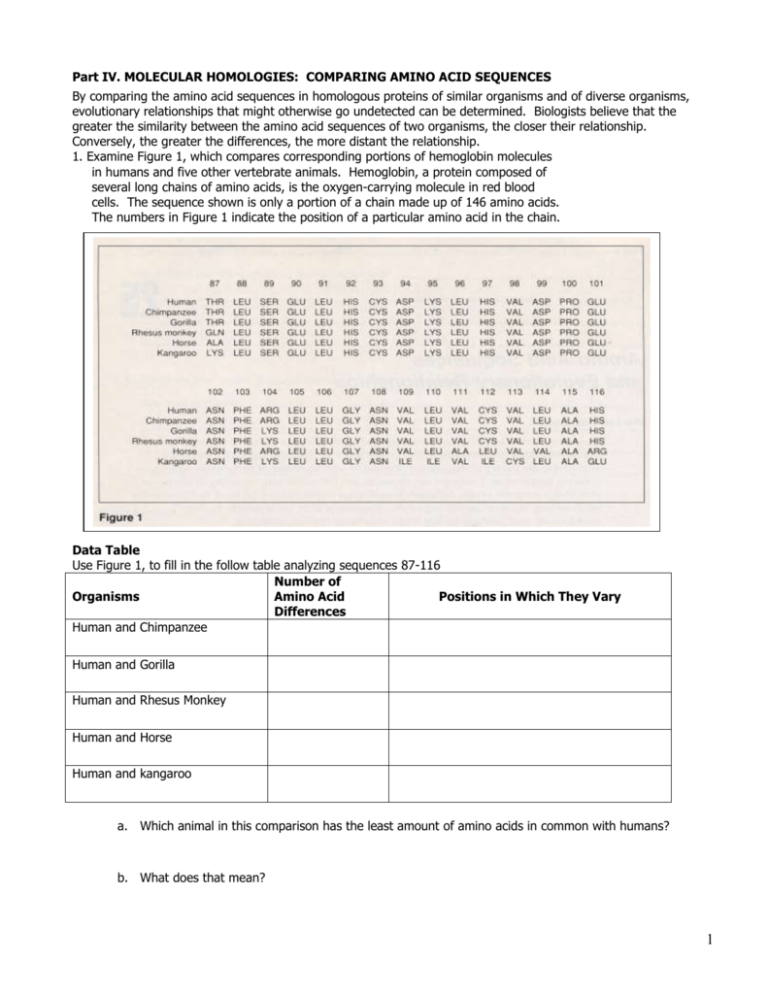
Part IV. MOLECULAR HOMOLOGIES: COMPARING AMINO ACID SEQUENCES By comparing the amino acid sequences in homologous proteins of similar organisms and of diverse organisms, evolutionary relationships that might otherwise go undetected can be determined. Biologists believe that the greater the similarity between the amino acid sequences of two organisms, the closer their relationship. Conversely, the greater the differences, the more distant the relationship. 1. Examine Figure 1, which compares corresponding portions of hemoglobin molecules in humans and five other vertebrate animals. Hemoglobin, a protein composed of several long chains of amino acids, is the oxygen-carrying molecule in red blood cells. The sequence shown is only a portion of a chain made up of 146 amino acids. The numbers in Figure 1 indicate the position of a particular amino acid in the chain. Data Table Use Figure 1, to fill in the follow table analyzing sequences 87-116 Number of Organisms Amino Acid Positions in Which They Vary Differences Human and Chimpanzee Human and Gorilla Human and Rhesus Monkey Human and Horse Human and kangaroo a. Which animal in this comparison has the least amount of amino acids in common with humans? b. What does that mean? 1 Analysis and Interpretations 1. Explain why analogous structures occur in nature. 2. Using your imagination, what parts of the human body might become vestigial in the next million years. Explain your reasoning. 3. Why is it important to compare amino acid sequencing? 2






